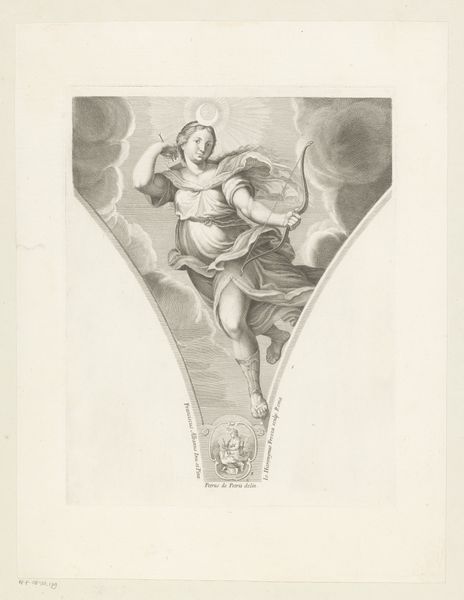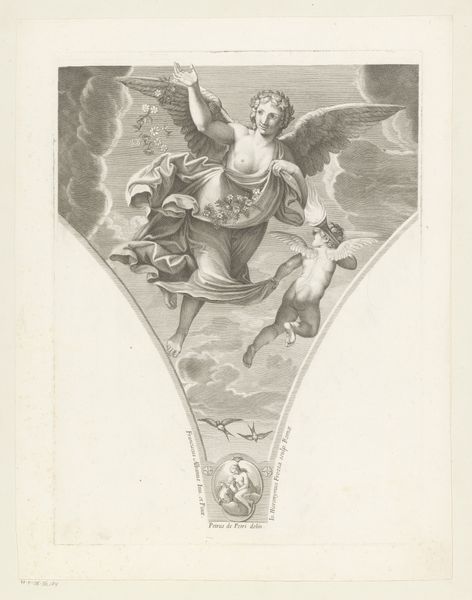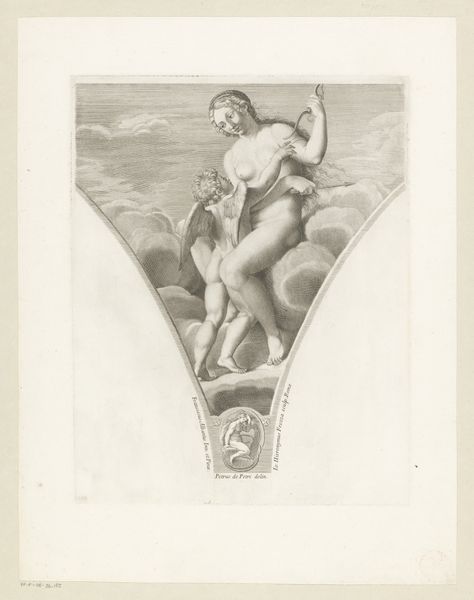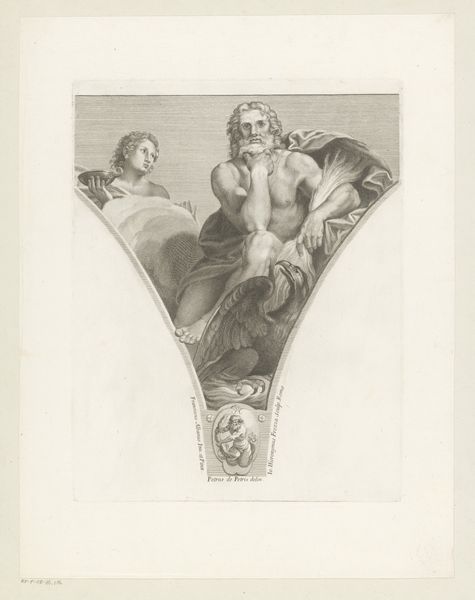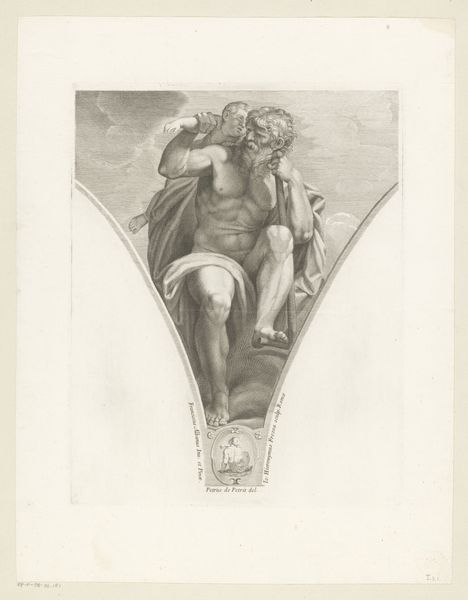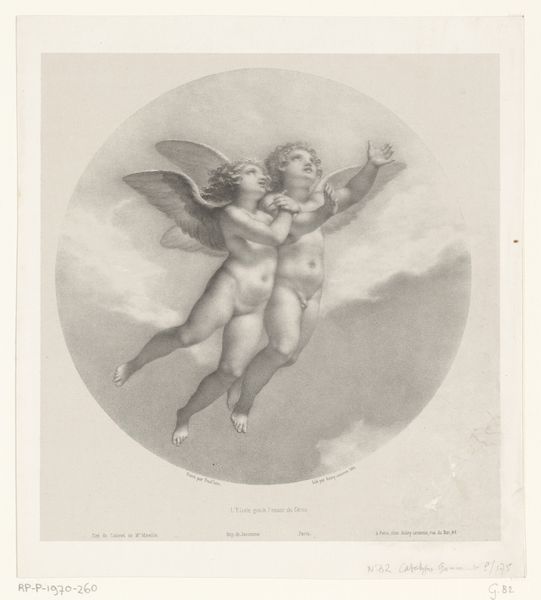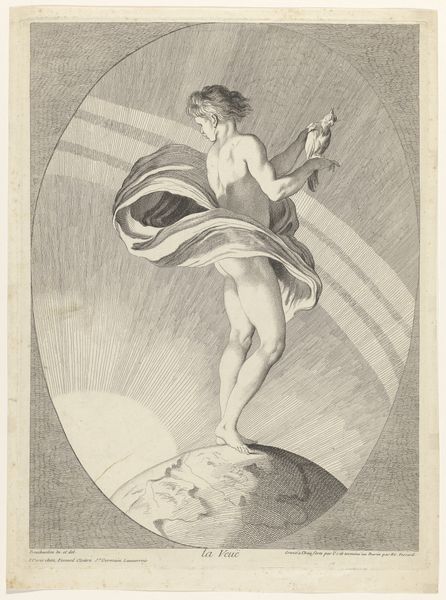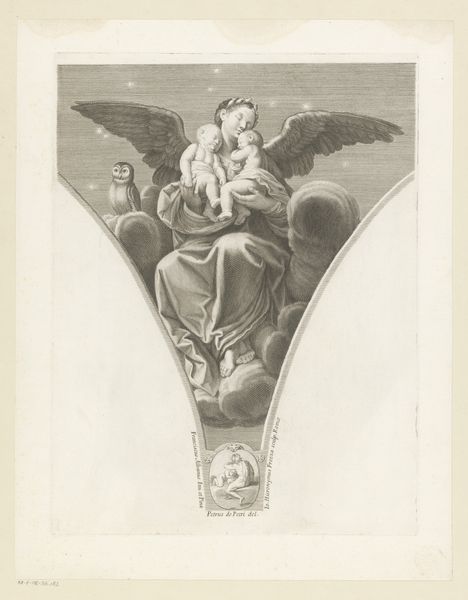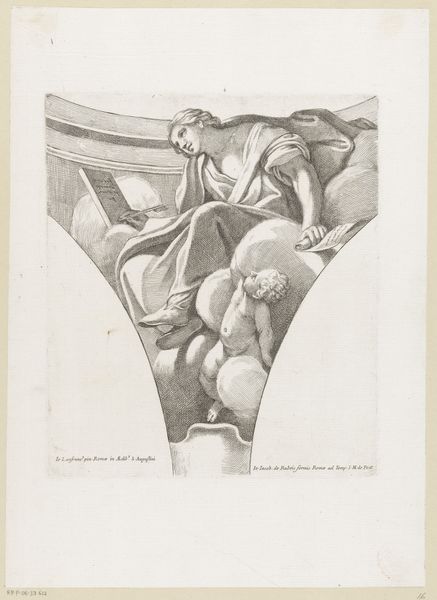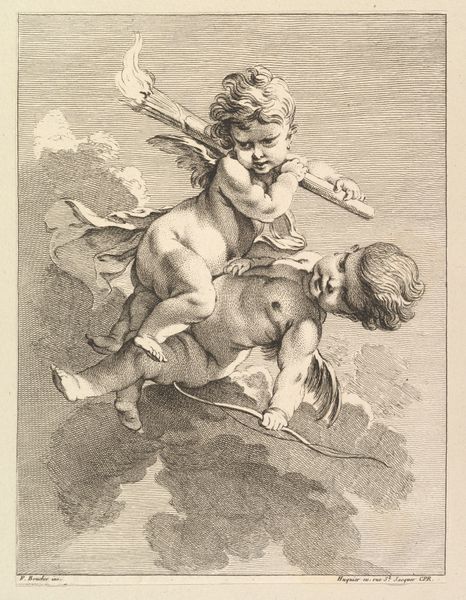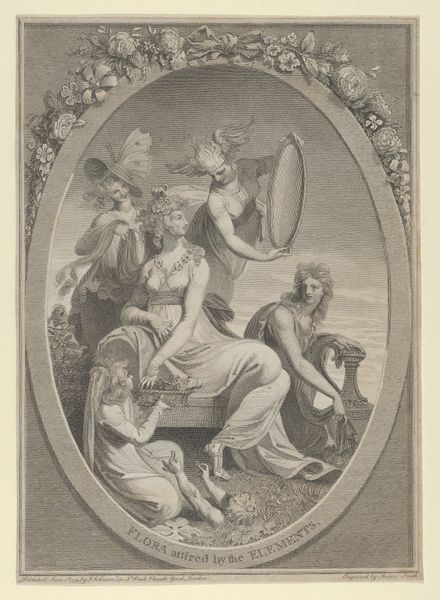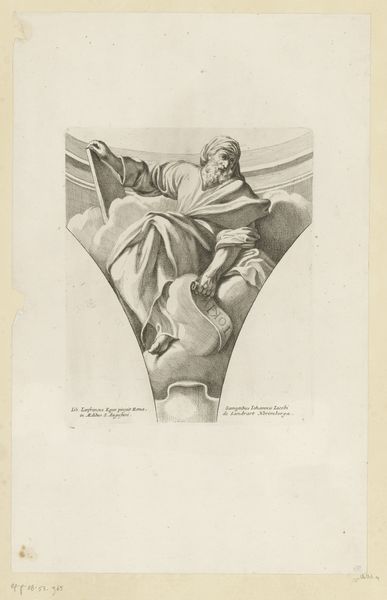
engraving
#
allegory
#
baroque
#
old engraving style
#
figuration
#
line
#
history-painting
#
nude
#
engraving
Dimensions: height 356 mm, width 280 mm
Copyright: Rijks Museum: Open Domain
Editor: Here we have Giovanni Girolamo Frezza’s "Mercurius," an engraving from 1704. The figure seems to be floating in this heavenly space, carrying a caduceus, the symbol of medicine, and wearing winged sandals and helmet, traditional elements in the iconography of Mercurius. What stands out to me is the way the artist merges classical mythology with Baroque sensibilities. What do you see in this piece? Curator: Beyond the beautiful Baroque aesthetic, I see a potent allegory steeped in power dynamics. Consider the context: 1704. European society was rigidly hierarchical. Frezza's "Mercurius" isn’t just a god; he's a symbol appropriated by those in power to legitimize their authority. Mercury was, among other things, a divine messenger—and that message was carefully curated. How does this calculated use of classical imagery contribute to shaping societal narratives, reinforcing specific political viewpoints? Editor: That’s a very interesting point about the manipulation of the allegory. I guess it shows the patron had a desire to convey power? Curator: Precisely! The engraving style itself, with its clear, controlled lines, also speaks to order and authority. Think about the relationship between art and propaganda, even back then. Was Frezza subtly complicit in promoting a particular worldview, consciously or unconsciously? Or was he using allegorical and historical distance as commentary? Who commissioned the image, and for what purpose? Those are the crucial questions we must explore to unravel meaning within political structures. Editor: I hadn’t considered that aspect before, of Mercurius embodying authority through imagery of its time. It definitely encourages me to think about the power structures embedded within even seemingly decorative or representational artworks. Curator: Exactly! It's a starting point, right? To understand how art is so deeply intertwined with society's historical context, gender, race, and politics. Now let's think more about gender in the Baroque period!
Comments
No comments
Be the first to comment and join the conversation on the ultimate creative platform.
